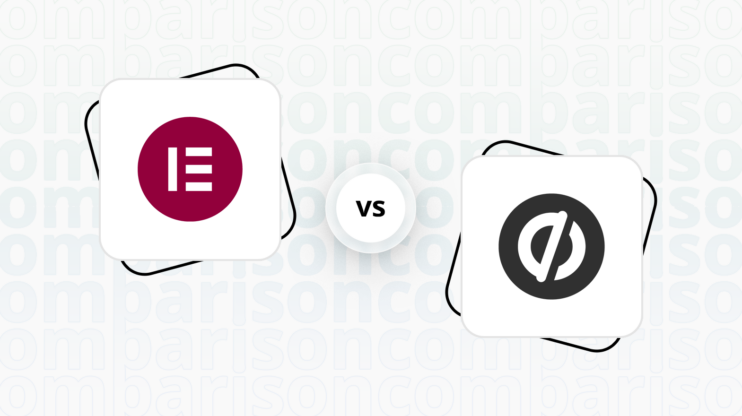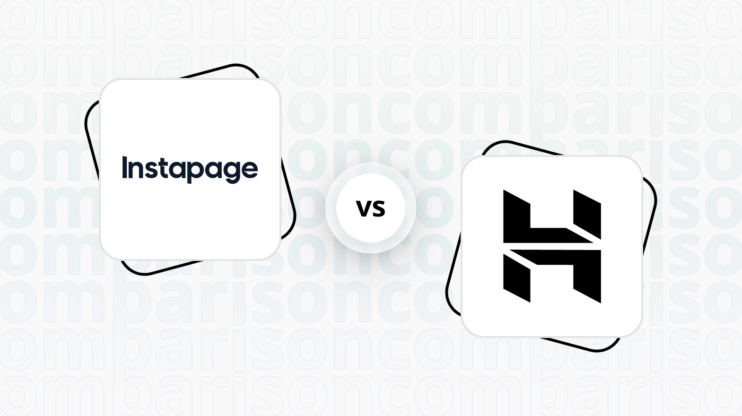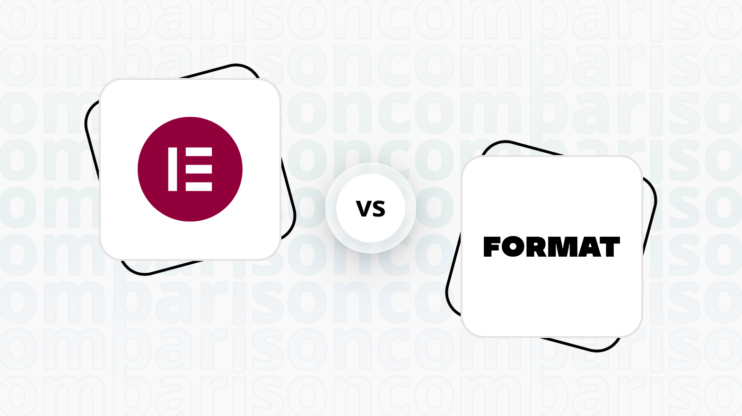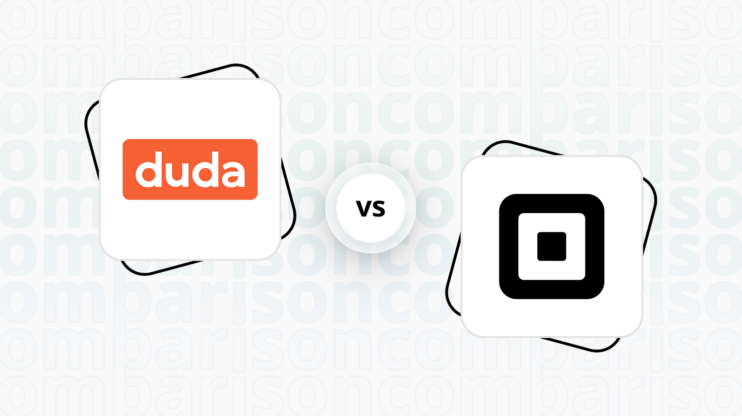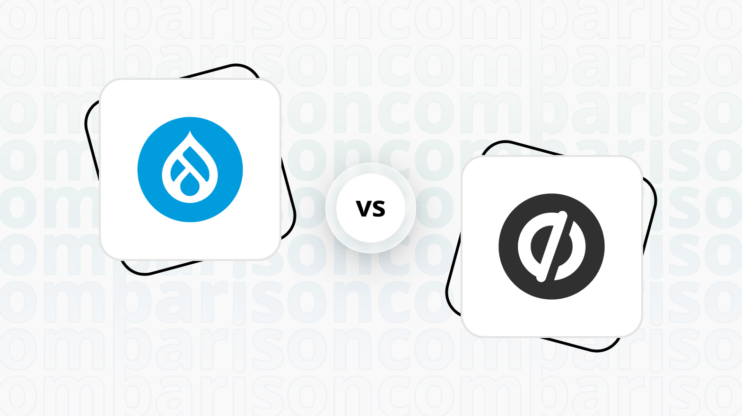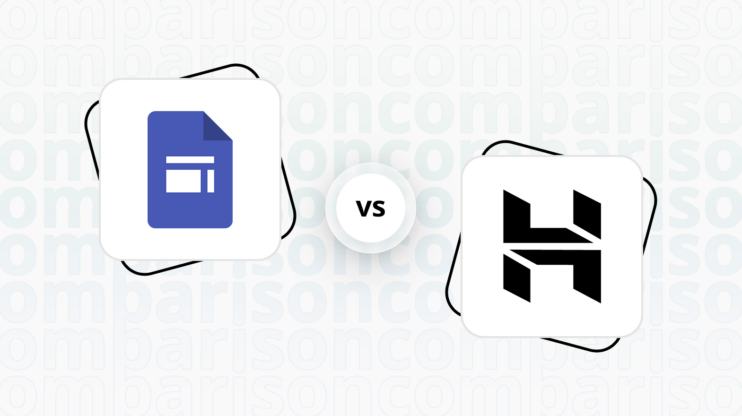Final verdict
Shopify and Unbounce cater to different needs, making them suitable for distinct user bases.
-
Shopify (Overall Grade: 8.1/10)
is a robust ecommerce platform designed for businesses looking to create and manage online stores. It excels in providing comprehensive ecommerce features, advanced marketing tools, and strong security measures. Shopify’s extensive app store and seamless integrations make it a powerful choice for scaling businesses. When comparing Shopify vs Unbounce, Shopify is ideal for users seeking a dedicated ecommerce solution with a focus on growth and efficiency. -
Unbounce (Overall Grade: 6.4/10)
is a specialized platform for creating high-converting landing pages, popups, and sticky bars. It is particularly favored for its user-friendly drag-and-drop builder and strong focus on optimizing conversion rates. Unbounce integrates well with various marketing tools and analytics platforms, making it a great choice for marketers looking to capture leads and launch campaigns. Considering Shopify vs Unbounce, Unbounce is best suited for users who prioritize landing page optimization and conversion rate improvements.

|

|
|
|---|---|---|
|
Design functionalities & templates |
8.2 |
7.8 |
|
Ease of use |
7.5 |
8.2 |
|
Ecommerce |
9.2 |
4.8 |
|
Website Editors |
7.9 |
7.5 |
|
Product testing options |
8.1 |
6.6 |
|
Price |
8.2 |
7.0 |
|
Hosting quality |
9.0 |
3.9 |
|
Website speed optimization |
7.8 |
5.6 |
|
Plugins and integrations |
8.7 |
6.8 |
|
Marketing features |
8.8 |
7.4 |
|
Customer support |
8.6 |
7.7 |
|
Security |
9.0 |
8.4 |
|
AI capabilities |
7.9 |
7.5 |
|
User Management |
6.5 |
7.2 |
Best for ecommerce
 9.2
9.2
 4.8
4.8
Verdict
: Shopify is the clear winner for ecommerce, offering a robust set of features for online stores, while Unbounce is more suited for creating high-converting landing pages with ecommerce integrations.
-
Shopify
: Known for its comprehensive ecommerce features, Shopify is ideal for businesses looking to scale. It supports a wide range of ecommerce functions, including advanced inventory management, multi-channel selling, and detailed analytics. Shopify Payments simplifies the payment process, and the platform’s extensive app library adds even more functionality. With a score of 9.2, Shopify is the go-to platform for serious ecommerce businesses. -
Unbounce
: Primarily a landing page builder, Unbounce excels in creating and optimizing high-converting pages. It integrates with ecommerce platforms like Shopify and Ecwid, allowing users to create targeted landing pages for their products. However, it lacks the comprehensive ecommerce features that Shopify offers. With a score of 4.8, Unbounce is better suited for marketers focusing on conversion rate optimization rather than full-fledged online stores.
Best for informational & business websites
 6.8
6.8
 5.9
5.9
Verdict
: When it comes to creating informational and business websites, Shopify and Unbounce each have their own strengths. Shopify, with a score of 6.8, is more suited for ecommerce-focused sites but can still be used for informational purposes. Unbounce, scoring 5.9, excels in creating high-converting landing pages but may not be as versatile for broader informational website needs.
-
Shopify
: Shopify is primarily an ecommerce platform, offering a range of tools for product listing, payments, and order fulfillment. While it can be used for informational websites, its strengths lie in ecommerce functionalities. The platform provides sleek, professional templates and a robust hosting solution, making it a reliable choice for businesses that may also want to incorporate online sales. -
Unbounce
: Unbounce is designed for creating custom landing pages, popups, and sticky bars with a strong focus on optimizing conversion rates. It offers a user-friendly drag-and-drop interface and a variety of high-converting templates. While it excels in creating targeted landing pages, it may not offer the same level of versatility for broader informational websites as Shopify. However, its ease of use and integration with marketing tools make it a strong contender for businesses focused on lead generation and conversion optimization.
Detailed comparison
Design functionalities & templates
Design FunctionalitiesRepresents how well each platform allows for creative design and customization of websites.Score Components:
- Template Variety (30%): Range and quality of design templates.
- Customization (30%): Flexibility and options for design alterations.
- User Interface (20%): Ease and intuitiveness of the design process.
- Responsiveness (10%): Adaptability to different devices and screen sizes.
- Innovation (10%): Unique design features and tools.
 8.2
8.2
 7.8
7.8
🏆
Winner: Shopify.
If you’re looking for a platform that offers more ecommerce-focused design functionalities and templates, Shopify is the preferred choice.
Shopify’s templates are sleek and professional, ideal for ecommerce sites. They offer a sophisticated look with a focus on online stores. While the free template selection is not large, Shopify’s premium theme store provides a variety of industry-specific options, offering advanced features for a strong brand presence.
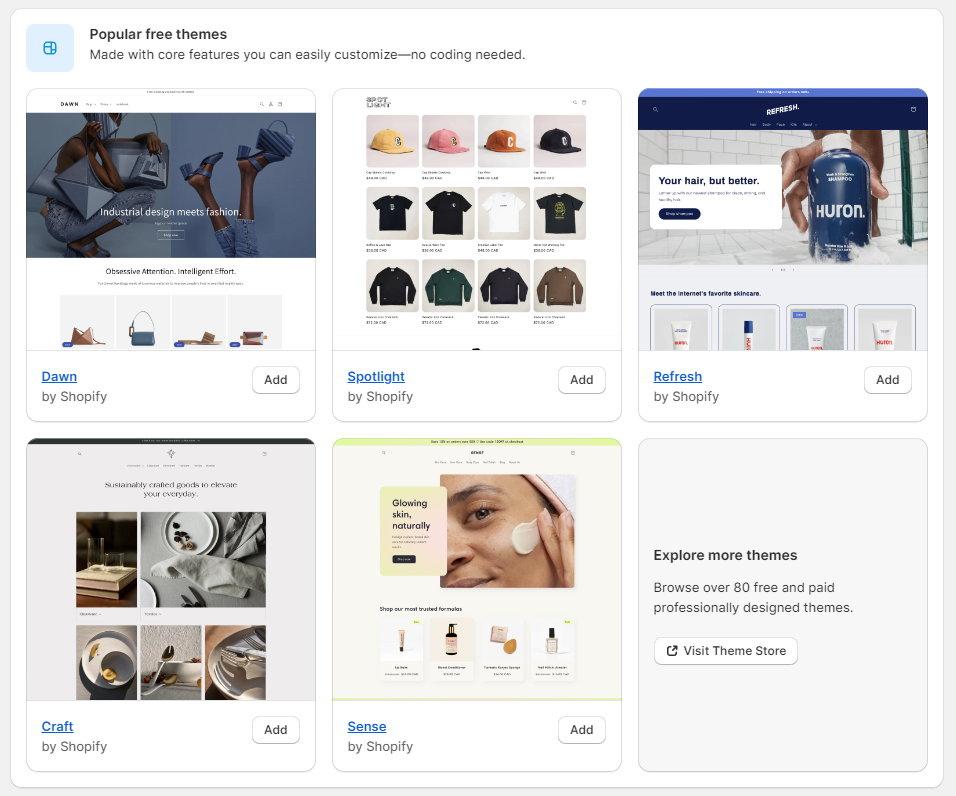
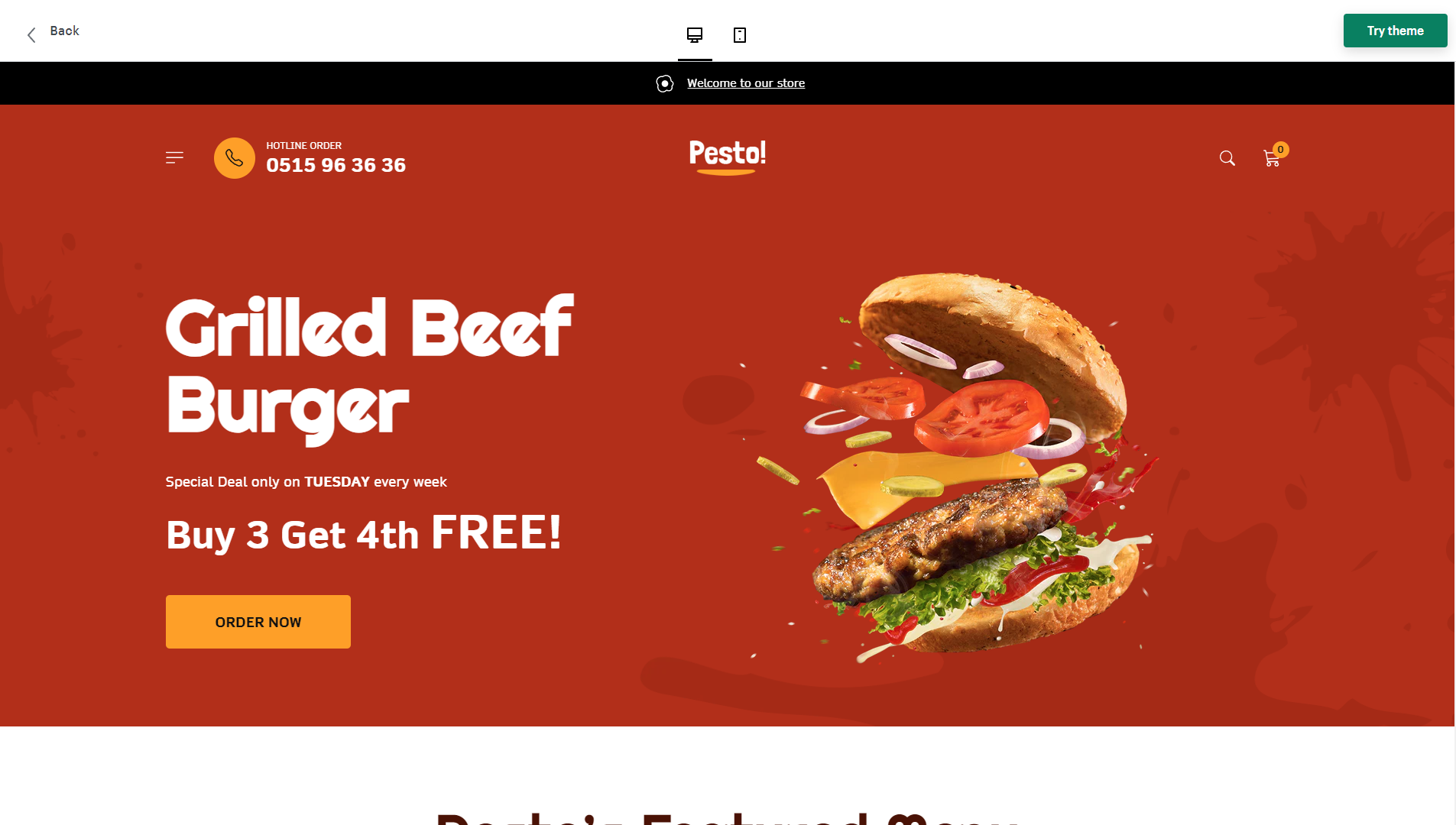
Compared to Shopify, Unbounce provides a gallery of over 100 high-converting templates for landing pages, popups, and sticky bars. These templates are designed with conversion in mind, incorporating knowledge and insights gained from Unbounce’s experience in optimizing landing pages. Users have the flexibility to choose from these ready-to-use templates or start with a blank canvas to create their own designs using Unbounce’s drag-and-drop builder.
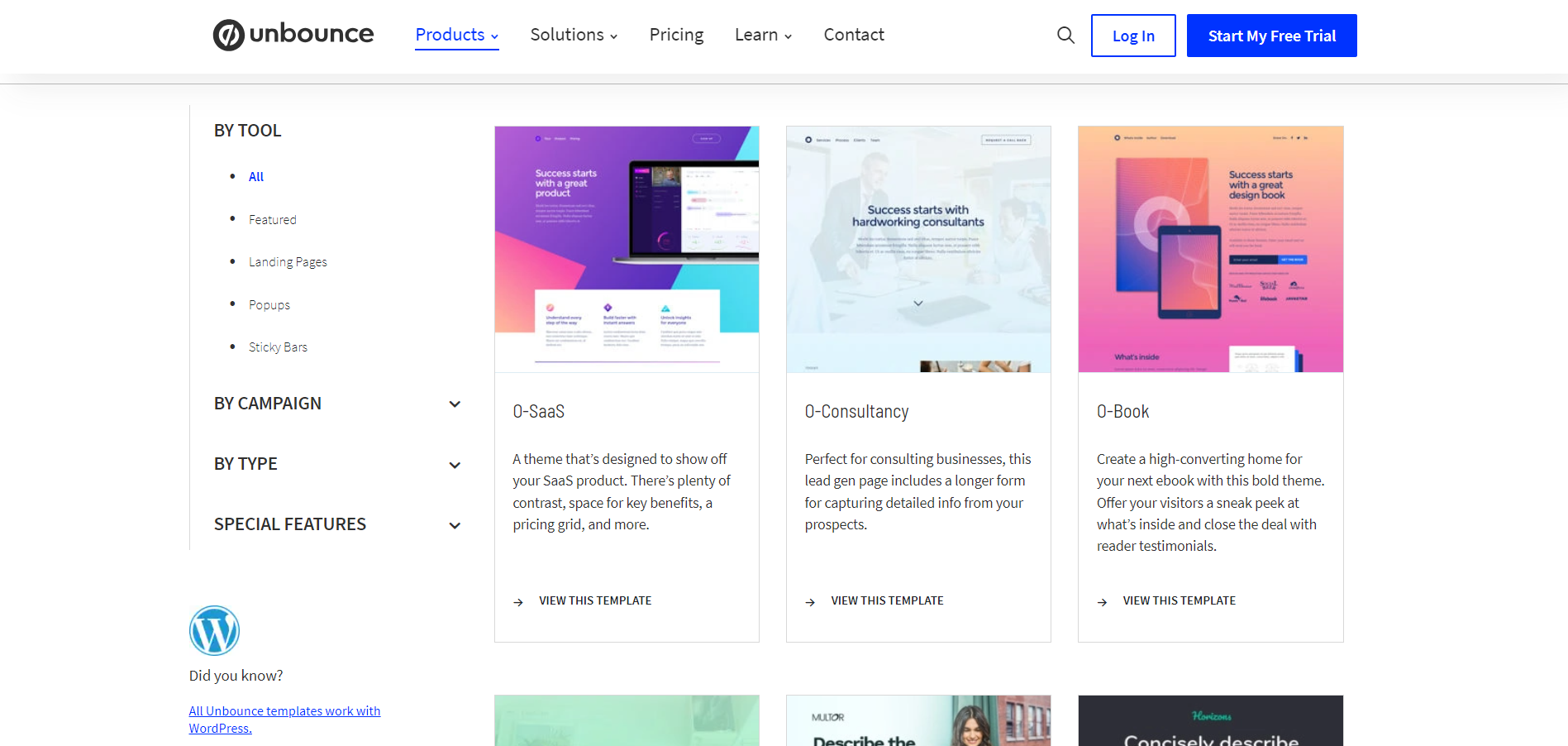
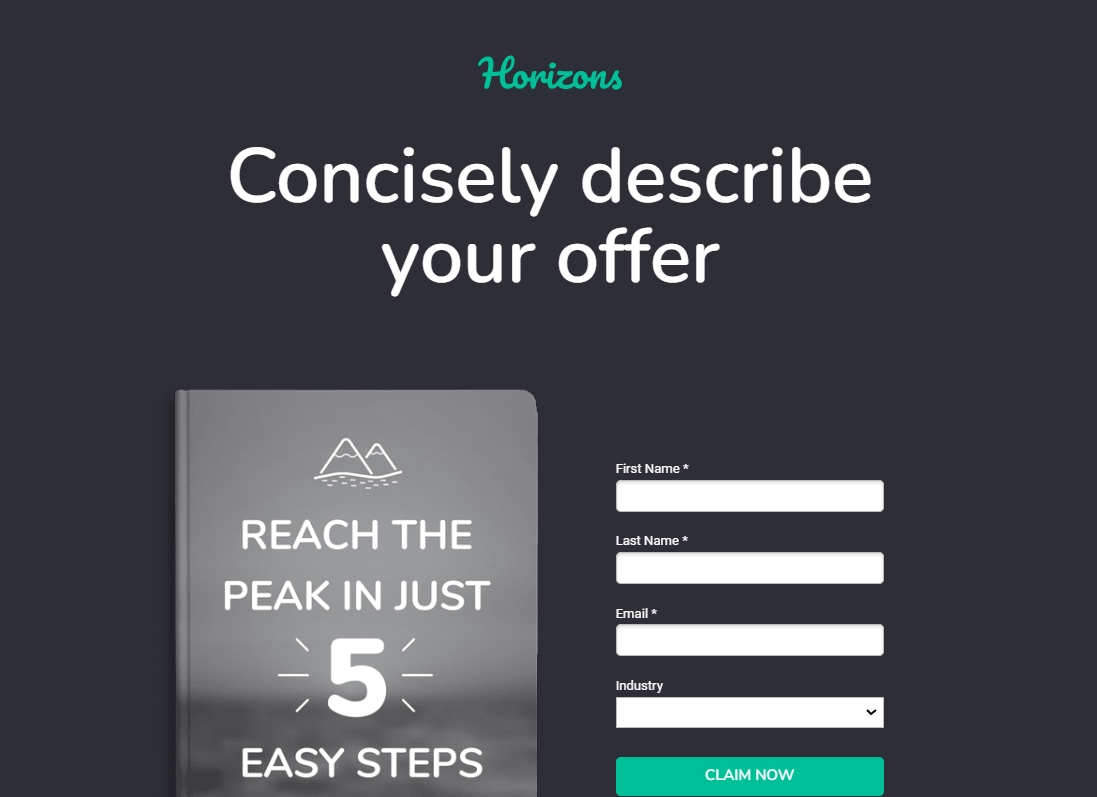
Get a head start on website creation with AI
Create a custom website tailored to your business needs 10X faster with 10Web AI Website Builder!
Ease of use
Ease of useReflects the platform’s overall user-friendliness.Score
Components:
- Learning curve (40%): Quickness and ease of getting started.
- Interface design (30%): Simplicity and intuitiveness of layout.
- User guidance (20%): Quality of tutorials and support.
- Flexibility (10%): Adaptability to various user skills.
 7.5
7.5
 8.2
8.2
🏆 Winner: Unbounce
. With a score of 8.2, Unbounce is recognized for its intuitive drag-and-drop builder and a wide selection of templates, making it easy for users to design and customize landing pages. Shopify, scoring 7.5, also offers a user-friendly platform but with a steeper learning curve, especially for those new to ecommerce. If ease of use is a priority, Unbounce is the clear winner in this category.
Learning Resources
🏆 Winner: Shopify
. Both platforms offer solid learning resources, but Shopify provides a more extensive library of articles, tutorials, webinars, and video courses, focusing primarily on setting up and managing online stores. This makes it easier for users to learn and adapt.
For ecommerce
EcommerceMeasures the platform’s effectiveness in supporting online business activities.Score Components:
- Ecommerce themes and templates (20%): Variety and design of templates.
- Product management (25%): Ease of managing and organizing products.
- Payment options (25%): Variety and convenience of payment methods.
- Ecommerce features (20%): Features for managing an ecommerce store.
- Integration (10%): Compatibility with external e-commerce tools and services.
 9.2
9.2
 4.8
4.8
Shopify is a leading ecommerce platform with a comprehensive set of features for online businesses. It offers tools for creating and customizing online stores, managing products, processing payments, and handling order fulfillment. On the other hand, Unbounce is primarily a landing page builder with the ability to integrate with ecommerce platforms such as Shopify or Ecwid. It stands out for its ability to create, test, and customize highly targeted e-commerce landing pages, aiming to double conversion rates compared to traditional online stores.

|

|
|
|---|---|---|
|
Ecommerce themes and templates |
8.2 |
2.0 |
|
Product page customization |
8.5 |
3.0 |
|
Payment processing and commissions |
8.8 |
6.5 |
|
POS capabilities |
8.1 |
0.0 |
|
Payment gateways |
9.5 |
7.0 |
|
Product numbers |
9.0 |
0.0 |
|
Additional ecommerce features |
9.1 |
4.5 |
Shopify ecommerce features:
- Comprehensive store builder
- Shopify Payments and other gateways
- Advanced inventory management
- Multi-channel selling
- Abandoned cart recovery
- Detailed analytics and reporting
Unbounce ecommerce features:
- Shopify, Ecwid, or and other ecommerce solutions integration
Ecommerce themes & templates
Shopify offers about 150 modern responsive themes for creating a virtual storefront, ensuring a good look on both desktop and mobile devices. While some themes are free, others cost between $170 to $380. Unbounce, on the other hand, primarily focuses on building landing pages and does not have ecommerce specific templates.
Product page customization
Shopify has a limit of three options per product, totaling 100 unique variations. This limit may not pose a significant constraint, and it is suggested that for products with numerous options, creating separate listings on Shopify can be a more manageable approach. While Shopify offers titles, descriptions, and image galleries with zoom effects, customization options like adding ribbons, size charts, and wishlists are not as straightforward. However, Shopify distinguishes itself with additional features through its extensive library of extra apps, offering functionalities like reviews, Facebook stores, eBay item importers, and a unique Augmented Reality feature for an enhanced customer experience. Unbounce, on the other hand, does not have the possibility to create or customize product pages, it’s primarily focused on building landing pages, with the possibility to integrate with ecommerce platforms such as Shopify or Ecwid.
Payment processing
When it comes to payment processing, Shopify offers payments with typical charges of
2.9% + 30¢
per online transaction on basic plans, and lower fees for higher-tier plans. However, it adds extra fees for using other payment gateways. Shopify Payments is Shopify’s own payment processing gateway. It allows merchants to accept credit card payments directly on their store without having to integrate third-party payment providers. This simplifies the payment process, reduces transaction fees, and streamlines the handling of finances. Unbounce supports payment processing through an integration with Stripe, allowing users to create landing pages that can handle transactions directly, with Stripe facilitating global payments in over 135 currencies. Unbounce itself does not mention charging additional fees for transactions, implying that fees are subject to Stripe’s own pricing structure. The platform is focused on optimizing online conversions and does not offer Point of Sale (POS) capabilities, as its core features are designed for enhancing digital experiences such as landing pages and pop-ups.
Website Editors
Website EditorsEvaluates the platforms’ website building and editing capabilities.Score Components:
- Customization tools (40%): Range and power of editing features.
- Editor usability (30%): User experience within the editor.
- Design flexibility (20%): Freedom in layout and design changes.
- Update and maintenance ease (10%): Simplicity of updating and maintaining the site.
 7.9
7.9
 7.5
7.5
🏆
Winner: Shopify
. Shopify’s editor, with a score of 7.9, excels in providing a streamlined, ecommerce-focused editing experience. It’s particularly beneficial for users who prioritize efficient management of online stores. The editor is straightforward, making it easy to add products, manage inventory, and set up payment methods. Shopify’s editor is optimized for sales and business growth, with built-in tools specifically designed for ecommerce businesses.
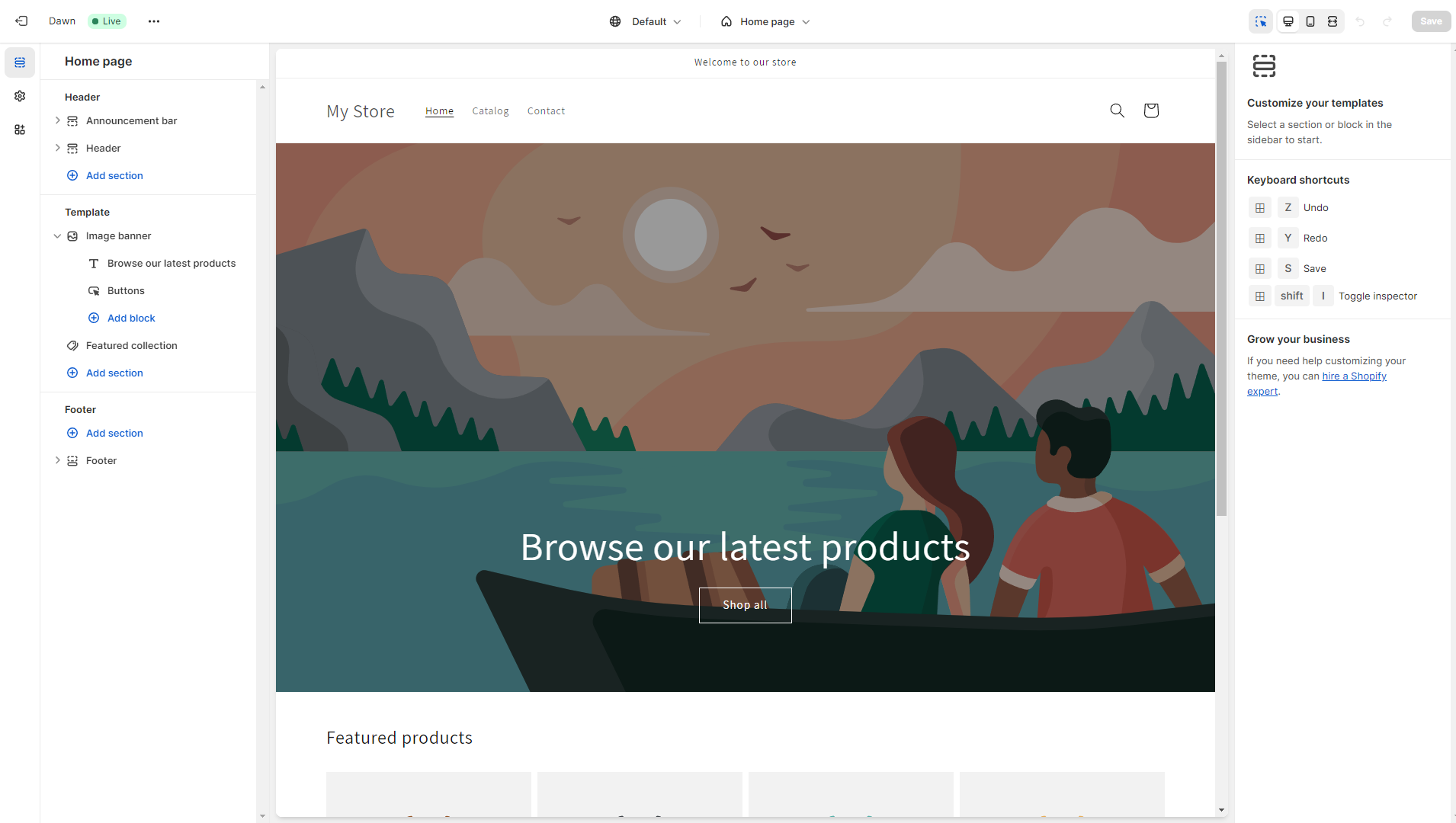
Unbounce’s editor, scoring 7.5, is equipped with a user-friendly drag-and-drop interface, enabling users to design and customize landing pages without the need for coding skills. It offers a variety of templates, widgets, and elements such as forms and buttons, alongside options for integrating custom HTML, CSS, and JavaScript for advanced customization. The platform supports responsive design, ensuring landing pages perform well across all devices, and includes features for A/B testing and dynamic text replacement to optimize conversion rates.
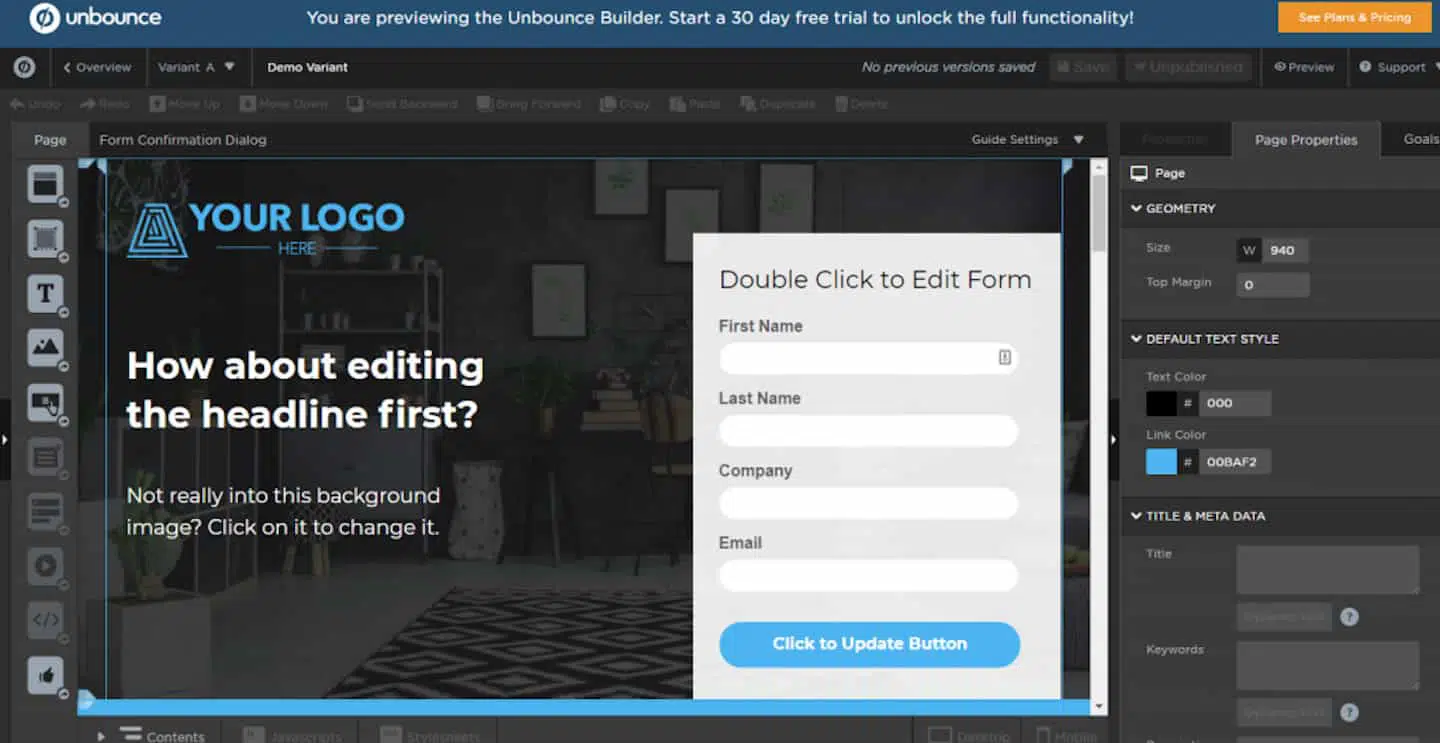
Mobile editor/app
 8.0
8.0
 0
0
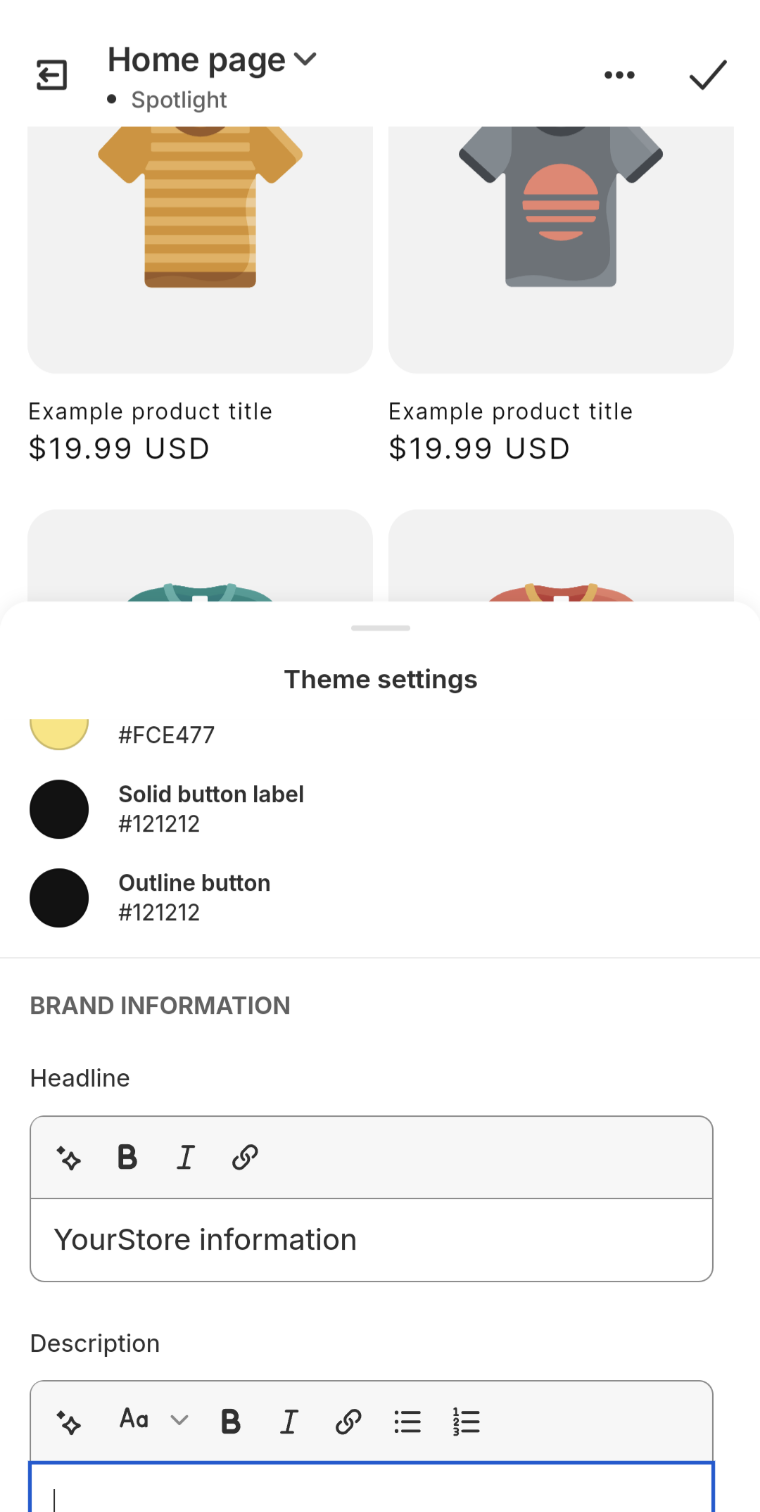
🏆
Winner: Shopify
. Both Shopify and Unbounce offer robust website builders, but when it comes to mobile editing, Shopify takes the lead. Shopify’s mobile app includes a user-friendly mobile theme editor that allows users to customize their online store website directly from their mobile device. This feature enables the addition, removal, editing, and rearrangement of content on the store’s website, offering convenient on-the-go adjustments to the store’s appearance and layout.
On the other hand, Unbounce does not have a dedicated mobile editor app. While Unbounce is a powerful platform for creating custom landing pages, popups, and sticky bars, its lack of a mobile editor app puts it at a disadvantage in this comparison.
In summary, Shopify is the clear winner in this category due to its mobile editing capabilities.
Product testing options
Product Testing OptionsAssesses the options for trying out platform features before commitment.Score Components:
- Trial quality (40%): Extent and usefulness of the trial or free version.
- Feature accessibility (30%): How many features are available to test.
- Trial duration (20%): Length of the trial period.
- Ease of transition (10%): Smoothness of moving from trial to paid plans.
 8.1
8.1
 6.6
6.6
Overall Result
:
Shopify Wins
. Shopify scores 8.1, offering a 14-day free trial with access to all features, while Unbounce scores 6.6, also offering a 14-day free trial but requires users to enter their billing information. Shopify also has an advantage in terms of a money-back guarantee, as Unbounce does not offer this feature.

|

|
|
|---|---|---|
|
Free Plan |
No (14-day free trial) | No (14-day free trial) |
|
Trial Duration |
14 days | 14 days |
|
Testing Premium Features |
All features during free trial |
Yes, but requires billing information |
|
Money Back Guarantee |
Yes |
No |
Price
PriceLooks at the cost-effectiveness and value for money of each platform.Score Components:
- Plan value (40%): What each pricing tier offers.
- Transparency and clarity (30%): Clearness of pricing structures.
- Flexibility of plans (20%): Range of options to suit different budgets.
- Hidden costs (10%): Additional expenses not included in the plan.
 8.2
8.2
 7.0
7.0
Shopify, with a price score of 8.2, offers a range of plans suitable for different scales of ecommerce operations. Unbounce, scoring 7.0 in price, provides a variety of plans focusing on landing page creation and conversion rate optimization.

|

|
|
|---|---|---|
|
$20-$30 |
Shopify Basic ($29/month): Unlimited products, 2.9% + 30¢ card fee with Shopify payments, Extra 2% gateway fee without Shopify Payments, Abandoned cart recovery, Automated sales tax, Digital products, POS Integration, 2 staff accounts. Value for price: 8.0 |
No offering at this amount. |
|
$70-$100 |
Shopify Standard ($79/month): Lower card fees (2.6% + 30¢), Gift cards, Professional reports, 5 staff accounts. Value for price: 8.5 |
Build ($99.00/month): Provides tools for building and launching high-converting landing pages, unlimited pages, popups, sticky bars, a form builder, free hosting, AI copywriting, custom scripts, 1,000+ integrations, support for 1 root domain with unlimited subdomains, catering up to 20,000 monthly unique visitors. Value for price: 6.5 |
|
$100-$200 |
No offering at this amount. |
Experiment ($149.00/month): Includes everything in the Build plan plus unlimited A/B tests, advanced reporting, dynamic text replacement, support for 2 root domains, and up to 30,000 monthly unique visitors. Value for price: 7.5 |
|
$200-$300 |
Advanced Shopify ($299/month): Lowest card fees (2.49% + 30¢), Advanced report builder, Real-time carrier shipping, Up to 15 staff accounts Value for price: 8.8 |
Optimize ($249.00/month): Adds to the Experiment plan with AI traffic optimization, visitor behavior insights, advanced targeting, supports 3 root domains, and caters to up to 50,000 monthly unique visitors. Value for Price: 8.0 |
|
$600+ |
No offering at this amount. |
Concierge (Starting at $649/month): Offers everything in the Optimize plan plus dedicated support, implementation services, client and user management, flexible add-on plans for scaling, starting with 5 root domains and 100,000 monthly unique visitors, with options to scale. Value for Price: 7.0 |
location. As a result in rare cases the prices displayed here can differ from the ones you see on their
websites.
Hosting quality
Hosting
qualityExamines the reliability and performance of the hosting solutions.Score Components:
- Uptime (40%): Consistency and reliability of website availability.
- Speed (30%): Loading times and performance.
- Bandwidth and storage (20%): Sufficiency of resources provided.
- Data centers (10%): Quality and distribution of hosting infrastructure.
 9.0
9.0
 3.9
3.9
🏆
Winner: Shopify
Shopify’s proprietary cloud-based hosting, 99.99% uptime guarantee, and five global data centers make it a superior choice for hosting. Unbounce, while offering hosting, does not specify its type or disclose its data center locations, and has a slightly lower uptime with no guarantee.

|

|
|
|---|---|---|
|
Do they offer hosting? |
Yes, included in all paid plans |
Yes, but the platform does not specify the type of hosting it provides |
|
Data Centers: |
5 globally: USA (Ashburn, Virginia; Santa Clara, California), Canada (Toronto, Ontario), Ireland (Dublin), and Singapore |
Unbounce does not disclose the locations of its data centers |
|
Type of hosting: |
Proprietary cloud-based hosting |
The platform does not specify the type of hosting it provides |
|
Uptime: |
99.99% |
99.96% |
|
Uptime Guarantee: |
Yes, 99.99% |
No |
Website Speed Optimization
Website Speed OptimizationEvaluates optimization of website loading timesScore Components:
- PageSpeed Score (30%): Google’s score indicating performance optimization.
- Loading Time (30%): The average time until a website is fully interactive.
- Mobile Optimization (15%): Optimization effectiveness for mobile devices.
- Resource Optimization (15%): Optimizing images, scripts, and other heavy resources.
- CDN Usage (10%): Use of CDN to enhance speed across geolocations.
 7.8
7.8
 5.6
5.6
🏆 Winner: Shopify
Both Shopify and Unbounce have strategies in place for website speed optimization, but Shopify scores higher in this area.

|

|
|
|---|---|---|
|
Focus |
App optimization, Google AMP |
Image optimization, Caching, Speed Booster |
|
Performance Tools |
Google Lighthouse, PageSpeed Insights |
Unbounce does not provide this information |
|
Key Strategies |
App efficiency, Theme optimization |
Image optimization, Caching, Speed Booster |
|
Load Times |
Varies widely, dependent on optimization |
Varies depending on optimization and website complexity |
|
Page Speed Scores Range |
Scores vary; influenced by apps, images |
Unbounce does not provide this information |
|
Core Web Vitals Improvement |
Emphasis on LCP, FID, CLS improvements |
Unbounce does not provide this information |
Shopify places a strong emphasis on website performance and page speed, with strategies including app efficiency and theme optimization. Shopify also suggests utilizing Google AMP for faster mobile page loads. Load times and PageSpeed scores vary widely, influenced by apps and images. Shopify also places an emphasis on improving Core Web Vitals, including Largest Contentful Paint (LCP), First Input Delay (FID), and Cumulative Layout Shift (CLS).
Unbounce, on the other hand, uses image optimization, caching, and a Speed Booster for website speed optimization. However, Unbounce does not provide any information on their load times, PageSpeed scores, or Core Web Vitals improvements. The load times and PageSpeed scores for Unbounce websites vary depending on optimization and website complexity.
Get a head start on website creation with AI
Create a custom website tailored to your business needs 10X faster with 10Web AI Website Builder!
Plugins and integrations
Plugins and integrationsMeasures the range and effectiveness of additional plugins and integrations.Score Components:
- Variety of options (40%): Range of available add-ons.
- Integration smoothness (30%): Ease of integrating plugins into the site.
- Quality of plugins (20%): Functionality and reliability of the options.
- Custom integration capabilities (10%): Support for custom or third-party integrations.
 8.7
8.7
 6.8
6.8
🏆 Winner: Shopify.
With a score of 8.7, Shopify outperforms Unbounce, which scores 6.8. Shopify offers over 8,000 apps in its App Store, covering a wide range of functionalities. These apps come with various pricing options, including free, paid, freemium, and one-time payment models. On the other hand, Unbounce offers over 50 apps and integrations, all of which are free to install. While Unbounce’s integrations facilitate deeper insights into user behavior, automate lead management with CRM and email marketing services, and enable secure payment processing directly on landing pages, Shopify’s plugins and integrations enhance ecommerce by offering advanced sales, marketing, and payment options, streamlined shipping, sophisticated inventory management, improved customer service, in-depth analytics, seamless accounting integration, creative store design, mobile app support, enhanced security, multi-channel selling, product review tools, dropshipping and print-on-demand support, language localization, and accessibility improvements.
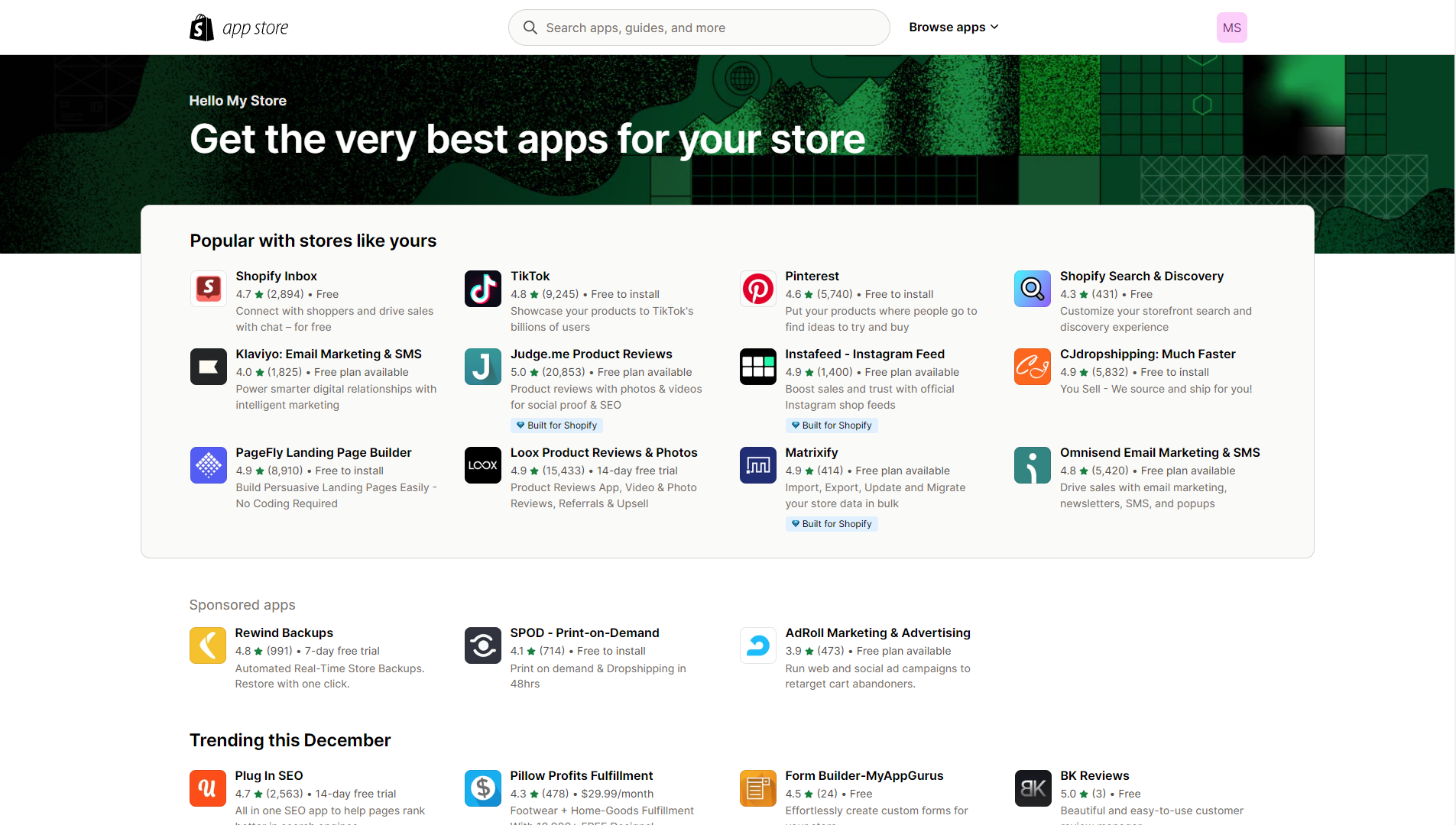

Marketing Features
Design FunctionalitiesRepresents how well each platform allows for creative design and customization of websites.Score Components:
- Template Variety (30%): Range and quality of design templates.
- Customization (30%): Flexibility and options for design alterations.
- User Interface (20%): Ease and intuitiveness of the design process.
- Responsiveness (10%): Adaptability to different devices and screen sizes.
- Innovation (10%): Unique design features and tools.
 8.8
8.8
 7.4
7.4
Overall Winner: Shopify
. Shopify stands out for its comprehensive set of marketing tools, especially in the field of ecommerce. Unbounce, while lacking in blogging capabilities, excels in creating tailored landing pages and offers extensive customization options, making it a strong contender in the field of ads and promotions.
| Marketing Features |

|

|
|---|---|---|
|
SEO Tools |
|
|
|
Email Marketing |
|
With integration of third-party services |
|
Blogging |
|
|
|
Social Media Integration |
Advanced integration for selling directly on social platforms |
|
|
Analytics and Reporting |
Detailed analytics for in-depth insights |
|
|
Ads and Promotions |
Google Ads integration; sophisticated ad campaign management |
Unbounce landing pages can be used for ad campaigns |
Customer Support
Customer supportEvaluates the quality and availability of support options.Score Components:
- Response time (40%): Speed of support responses.
- Support quality (30%): Effectiveness and helpfulness of the support.
- Availability (20%): Range of support channels (phone, chat, email).
- Resource richness (10%): Quality of self-help and educational materials.
 8.6
8.6
 7.7
7.7
🏆 Winner: Shopify
. In the Shopify vs Unbounce comparison, Shopify takes the lead with a customer support score of 8.6. Shopify offers 24/7 support through chat, email, and phone, ensuring that users can get help at any time. The platform also provides clear tutorials, an extensive community forum, and a valuable marketing blog, making it easier for users to find solutions and grow their businesses.
Unbounce, with a customer support score of 7.7, offers a variety of support options, including live chat, email, and phone support available Monday to Friday from 6 AM to 6 PM PST. Additionally, Unbounce provides 24/7 support through its Help Centre, Community, and Chat Bot. While Unbounce’s support is robust, it doesn’t match the round-the-clock availability that Shopify offers, which can be crucial for businesses operating in different time zones.
Security
SecurityLooks at the platforms’ security measures and data protection.Score Components:
- Data protection (40%): Safeguards for user and customer data.
- SSL and encryption (30%): Implementation of secure connections.
- Compliance (20%): Adherence to industry security standards.
- Regular updates (10%): Frequency of security updates and patches.
 9.0
9.0
 8.4
8.4
🏆
Winner: Shopify
. Shopify’s security measures are comprehensive, including secure infrastructure, encryption, limited access, two-factor authentication, regular audits, and a dedicated incident response team. Shopify also ensures website security with SSL certificates, a built-in Web Application Firewall, and options for third-party firewalls.
Unbounce, while scoring slightly lower, also prioritizes security. It maintains high security standards by achieving PCI Level 4 Merchant status and adhering to GDPR. Unbounce employs a secure, multi-tenant environment with strict access controls and daily data backups. Its website security includes a defense-oriented architecture, network safety measures, encrypted communications, and stringent firewall policies.
AI Capabilities
AI capabilitiesMeasures the effectiveness of AI-driven features and tools.Score Components:
- Automation efficiency (40%): Impact of AI on streamlining processes.
- Personalization (30%): AI-driven customization for users or customers.
- AI-Assisted design (20%): Role of AI in website design and functionality.
- Data analysis (10%): Use of AI in interpreting user data and analytics.
 7.9
7.9
 7.5
7.5

|

|
|
|---|---|---|
|
Personalized Design |
|
Unbounce’s Smart Builder offers personalized templates and design recommendations |
|
SEO Optimization |
AI-driven recommendations for better search engine visibility |
|
|
Customer Behavior Analysis |
Advanced analytics to understand customer preferences |
Unbounce’s Smart Traffic directs visitors to the most appropriate landing page variant |
|
Sales Predictions |
AI-powered sales forecasting tools |
|
|
Inventory Management |
AI tools to assist in efficient inventory handling |
|
|
Content Generation |
Shopify’s AI features Content Assistant for brainstorming ideas and generating content |
Unbounce’s Smart Copy generates, remixes, and expands content for marketing and landing pages |
🏆 Winner: Shopify
. Shopify, with a score of 7.9, utilizes AI mainly to enhance the ecommerce experience. Its AI features focus on customer behavior analysis, personalized shopping experiences, inventory management, and sales predictions. While Shopify’s AI is powerful, it is more business and data-centric compared to Unbounce’s design-focused AI.
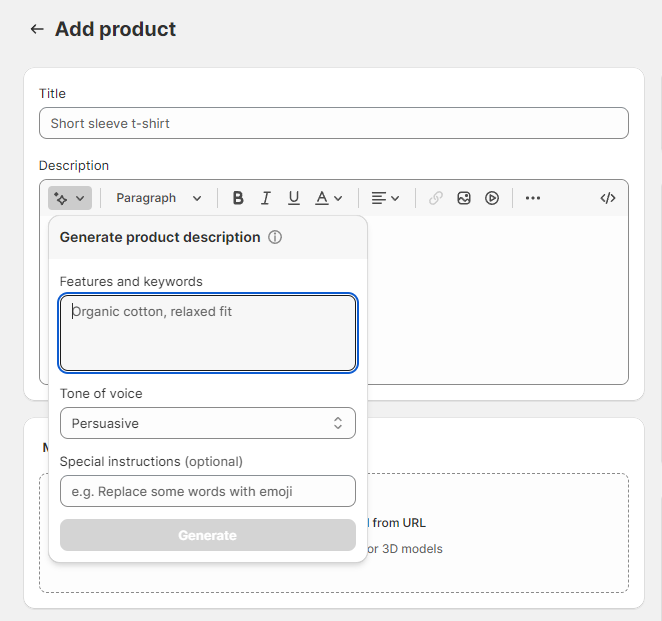
Unbounce, with a score of 7.5, utilizes AI to optimize landing page creation and conversion rates. Its AI features focus on personalized design, customer behavior analysis, and content generation. While Unbounce’s AI is powerful, it is more design and conversion-centric compared to Shopify’s business and data-centric AI.
User Management
User ManagementAssesses the platforms’ capabilities in managing user roles, permissions, and accessibility.Score Components:
- Role Customization (40%): Flexibility in creating and defining user roles and
permissions. - Ease of Management (30%): User interface and tools for managing users.
- Access Control (20%): Effectiveness of access control measures for different user
levels. - Scalability (10%): Ability to manage a growing number of users efficiently.
 6.5
6.5
 7.2
7.2
🏆 Winner: Unbounce
. Managing your online team with Shopify and Unbounce involves different approaches to website editing access.
-
Shopify enforces staff account limits based on plans, ranging from 2 to 15, with Shopify Plus offering unlimited
accounts. Collaborators with limited access are also an option. - Unbounce offers one staff account on its basic plan, with the option to expand up to 15 accounts on the premium plan. It also provides customizable permissions, enabling you to restrict or grant access based on roles such as viewer, author, and administrator.
Both platforms support simultaneous editing. Shopify uses avatar icons to indicate co-workers, while Unbounce displays a warning for concurrent editing, preventing accidental overwrites.
Shopify User Roles and Access Levels:
| Role | Description | Access Highlights |
|---|---|---|
| Store Owner | Full control over store | Manage products, orders, discounts, payments, apps, settings. Create and manage staff accounts. |
| Staff | Configurable access by owner |
Add/edit products, manage orders, fulfill orders, manage customers, update content. Access level can be customized by the owner. |
| Collaborator | Limited access for external partners | View and manage specific sections like blog or product categories. Cannot access full store settings. |
Unbounce User Roles and Access Levels:
| Role | Description | Access Highlights |
|---|---|---|
| Viewers | Members of your team who want to view and approve pages, popups, or sticky bars before publication. | Can access pages, popups, sticky bars, stats, and leads. Cannot edit/manage pages or access account management, billing details, domains, or add users. |
| Authors | Designers or copywriters invited to edit landing pages. | Can edit, manage, publish/unpublish pages, popups, sticky bars. Have access to viewing leads and stats. Cannot access account management, billing details, domains, or add users. |
| Administrators | Manage the Unbounce account, including billing details. | Can edit, manage, publish/unpublish pages, popups, sticky bars. Can access account management, billing details, domains, and add users. Cannot delete leads or remove other Admins. |
Additional Features

|

|
|
|---|---|---|
|
SSL Certificate |
|
|
|
Custom Domain |
|
|
|
Free Custom Domain Included |
|
|
|
International Domains |
|
|
|
Mobile Responsive |
|
|
|
Page Speed |
|
|
|
Website Builder Mobile App |
|
|
|
Convert a Website To An App |
|
|
|
Website Analytics |
|
|
|
Multilingual Sites |
|
|
|
Multiple Users |
|
|
User Feedback
Shopify’s slightly higher rating on G2 Crowd can be largely attributed to its specialization in ecommerce. Its comprehensive features, ease of use, and robust customer support cater specifically to online businesses, leading to high user satisfaction among those seeking a dedicated ecommerce solution.
The reviews for Unbounce reveal a mixed sentiment among users. On the positive side, many appreciate its user-friendly, drag-and-drop page builder, which facilitates the quick creation and editing of landing pages without the need for technical expertise. Users find it beneficial for A/B testing, integrating with CRMs, and swiftly turning around marketing content. However, there are notable concerns, particularly with a case of unexpected switch to an annual plan without consent and refusal to refund, indicating potential issues with customer service and billing practices. Additionally, some users mention technical limitations, such as responsiveness issues and the absence of global elements for content updates across multiple pages, which can hinder efficiency.
The making of this blog
We followed a clear, step-by-step process to write and research this article.
FAQ
What are the main differences between Shopify and Unbounce?
Can I use Unbounce for ecommerce?
Which platform is easier to use, Shopify or Unbounce?
How do Shopify and Unbounce compare in terms of pricing?
Which platform offers better customer support?
Are Shopify and Unbounce suitable for beginners?










